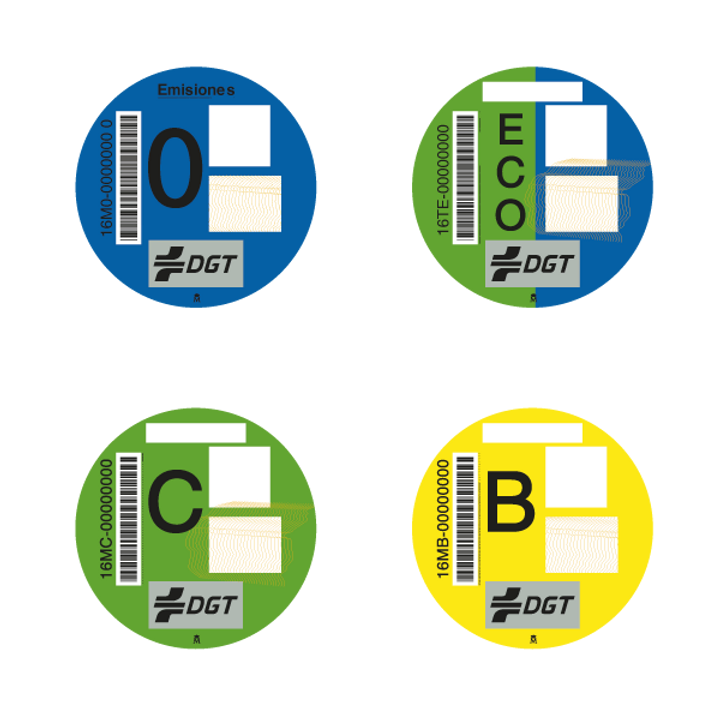
Management and comprehensive advice for companies, self-employed workers and citizens

job advice
Do you know the environmental labels you should have in your car?
In many cities across Spain and other European countries, traffic restrictions in urban areas have tightened to reduce pollution. One of the key factors in determining whether you can drive in certain areas is your car’s environmental label. But what types exist, and which one applies to your vehicle? We explain it below.

What Are Environmental Labels?
Environmental labels are stickers established by the Dirección General de Tráfico (DGT) to classify vehicles based on their environmental impact. These stickers indicate each car’s emission level and determine its access to low-emission zones (ZBE) in various cities.
Types of Environmental Labels
Zero Emissions Label (Blue)
Assigned to the most eco-friendly vehicles: electric cars, plug-in hybrids with an electric range over 40 km, and hydrogen fuel cell vehicles.
These vehicles can circulate without restrictions in any area and often enjoy benefits such as free parking in some cities.
ECO Label (Blue and Green)
For non-plug-in hybrid vehicles, plug-in hybrids with an electric range under 40 km, and gas-powered vehicles (LPG or CNG).
They enjoy certain advantages such as reductions in circulation taxes and partial access to some low-emission zones.
C Label (Green)
Applies to gasoline cars registered from January 2006 and diesel cars from 2014 onward.
Generally, they can circulate without issues, but during high pollution episodes, they may face restrictions in cities like Madrid or Barcelona.
B Label (Yellow)
For gasoline cars registered between January 2001 and 2005 and diesel cars between 2006 and 2013.
These vehicles face stricter access and parking restrictions in urban areas with high pollution levels.
No Label
These are the most polluting vehicles: gasoline cars registered before 2001 and diesel cars before 2006.
They are not allowed in many low-emission zones and, in some cases, cannot drive in certain cities at all.
How to Check Which Label Your Car Gets?
You can check your vehicle’s environmental label on the DGT website by entering your license plate number. Additionally, you can purchase the sticker at post offices, authorized workshops, and administrative agencies.
Is It Mandatory to Display the Environmental Label on Your Car?
In many cities, it is not mandatory to display the sticker, but it is recommended to avoid fines during urban inspections. Some low-emission zones do require vehicles to display the label to drive in restricted areas.
Conclusion
Environmental labels are essential for ensuring cleaner air and regulating traffic in cities with high pollution levels. Knowing which label applies to your vehicle and how it affects your mobility will help you avoid fines and contribute to a more sustainable environment. If you don’t have your label yet, check your license plate and get one as soon as possible.
Schedule your consultation today!
Do you need employment advice? Schedule a consultation with our experts and get the information you need. Don’t wait any longer; contact us today!